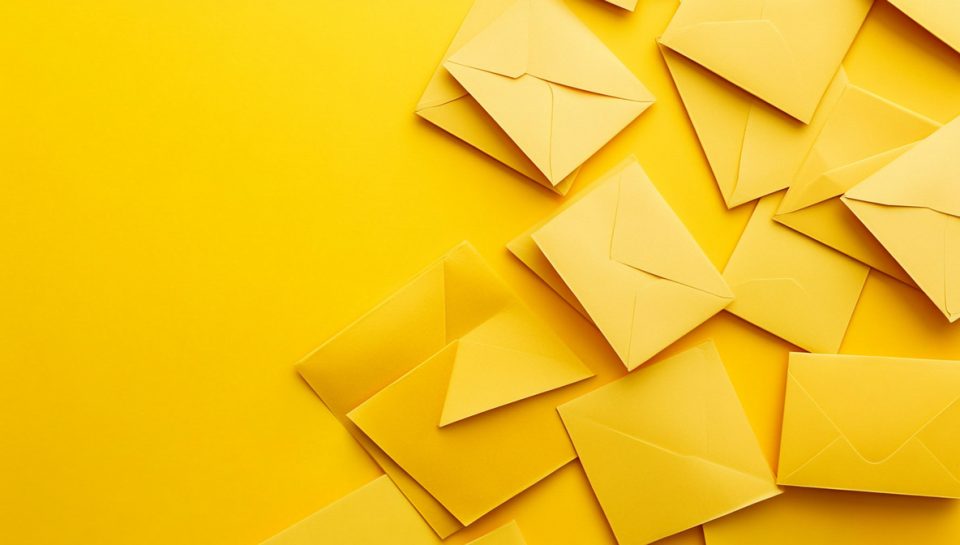
Email Marketing campaigns: Strategies, Best Practices
Email marketing campaigns remains one of the most effective digital marketing strategies, providing businesses with a direct channel to communicate with their customers. Despite the rise of social media and other marketing channels, email continues to deliver high ROI, engagement, and customer retention. This blog will explore email marketing in-depth, covering its benefits, strategies, best practices, and tips for optimizing campaigns for maximum success.
Why Email Marketing Matters
1. High ROI
Email marketing generates an average return on investment (ROI) of $42 for every $1 spent, making it one of the most cost-effective email marketing campaigns channels. The ability to reach targeted audiences at a low cost makes it attractive for businesses of all sizes.
2. Personalization and Segmentation
Unlike social media or other marketing channels, email allows for deep personalization and segmentation. Businesses can tailor messages based on user behavior, preferences, and past interactions, leading to higher engagement and conversion rates.
3. Direct and Owned Communication Channel
With email marketing campaigns, businesses own their audience, unlike social media platforms that control reach through algorithms. This direct communication channel ensures that businesses can consistently engage with their customers without relying on third-party platforms.
4. Automation and Scalability
Email marketing campaigns automation allows businesses to send targeted messages at the right time, nurturing leads and retaining customers efficiently. Automated workflows help scale marketing efforts without requiring constant manual input.
Successful Email Marketing Campaigns Strategy
1. Define Your Goals
Before launching an email marketing campaign, businesses must establish clear objectives. Common goals include:
- Increasing brand awareness
- Generating leads
- Boosting sales and conversions
- Nurturing customer relationships
- Driving website traffic
2. Build and Grow Your Email List
A high-quality email list is crucial for success. Here are some effective ways to grow your subscriber base:
- Lead Magnets: Offer incentives like free eBooks, discount codes, or exclusive content in exchange for email sign-ups.
- Website Opt-in Forms: Place sign-up forms on high-traffic pages, such as the homepage, blog, or checkout page.
- Social Media Promotion: Encourage followers to subscribe via social media campaigns.
- Exit-Intent Popups: Capture leads before they leave your site.
- Referral Programs: Incentivize existing subscribers to refer new contacts.

3. Segment Your Audience before email marketing campaigns
Segmentation ensures that subscribers receive relevant content, increasing engagement and reducing unsubscribe rates. Segmentation strategies include:
- Demographics: Age, location, gender, etc.
- Behavioral Data: Purchase history, website activity, engagement levels.
- Email Preferences: Frequency of emails, content interests.
- Customer Journey Stage: New subscribers, loyal customers, inactive users.
4. Craft Engaging and Valuable Content
Your email marketing content should be engaging, valuable, and aligned with subscriber interests. Consider:
- Subject Lines: Keep them short, compelling, and personalized.
- Personalization: Use the subscriber’s name and tailor content to their preferences.
- Visual Appeal: Use high-quality images, branding elements, and mobile-friendly designs.
- Clear Call-to-Action (CTA): Direct users to take action, such as visiting a website, making a purchase, or signing up for an event.
5. Automate Your Email Marketing Campaign
Email automation helps streamline communication and improve efficiency. Common automation workflows include:
- Welcome Series: In email marketing a sequence of emails introducing new subscribers to your brand.
- Abandoned Cart Emails: Reminders for users who left items in their cart.
- Re-engagement Campaigns: Targeting inactive subscribers with special offers.
- Post-Purchase Follow-Ups: Thank-you emails, upsell recommendations, or customer feedback requests.
6. Optimize Email Timing and Frequency
Sending too many emails can lead to unsubscribes, while sending too few can result in lost engagement. Consider:
- Best Days to Send: Studies suggest Tuesday, Wednesday, and Thursday have higher open rates.
- Best Times to Send: Typically, 9 AM – 11 AM or 1 PM – 3 PM performs well.
- A/B Testing: Test different sending frequencies to find the optimal schedule.
Best Practices for Email Marketing Campaigns Success
1. Maintain a Clean Email List
Regularly clean your list by removing inactive subscribers and incorrect email addresses to improve deliverability and engagement rates.
2. Optimize for Mobile
With most emails opened on mobile devices, ensure your email design is mobile-friendly, with readable fonts, optimized images, and clear CTAs.
3. Avoid Spam Triggers
To prevent emails from landing in the spam folder:
- Avoid excessive use of capital letters and spammy words (e.g., “FREE”, “BUY NOW”).
- Personalize emails instead of using generic greetings.
- Include an easy unsubscribe option to maintain a healthy list.
4. Leverage User-Generated Content
Encourage subscribers to share their experiences, reviews, and testimonials. Featuring user-generated content builds trust and enhances engagement.
5. Track and Analyze Metrics
Measure performance using key metrics such as:
- Open Rate: Percentage of recipients who open emails.
- Click-Through Rate (CTR): Percentage of recipients who click on links.
- Conversion Rate: Percentage of recipients who complete a desired action.
- Bounce Rate: Percentage of undelivered emails.
- Unsubscribe Rate: Percentage of recipients who opt out. Analyzing these metrics helps refine strategies and improve future email marketing campaigns.
Trends and Innovations in Email Marketing Campaigns
1. AI-Powered Personalization
Artificial intelligence (AI) is enhancing email marketing with predictive analytics, dynamic content, and hyper-personalization, allowing brands to send highly relevant messages.
2. Interactive Emails
Adding interactive elements like polls, surveys, quizzes, and animated CTAs boosts engagement and makes emails more dynamic.
3. Dark Mode Optimization
Many users prefer dark mode for reading emails. Optimizing email designs to be dark mode-friendly ensures a better user experience.
4. Omnichannel Integration
Integrating email marketing with social media, SMS, and other marketing channels creates a seamless customer journey.
5. Privacy and Data Protection Compliance
With regulations like GDPR and CCPA, businesses must ensure compliance by obtaining user consent and safeguarding subscriber data.
Finding Customer Email Addresses for Email Marketing campaigns
Building a high-quality email list is the foundation of a successful email marketing campaigns. Here are various strategies to find and collect customer email addresses effectively:
1. Website Sign-up Forms
- Add prominent sign-up forms on high-traffic pages such as the homepage, blog, and checkout page.
- Use pop-ups and exit-intent pop-ups to encourage visitors to subscribe before leaving.
- Create a dedicated landing page for email subscriptions with an enticing call-to-action.
2. Lead Magnets and Freebies
- Offer free resources such as eBooks, guides, whitepapers, or templates in exchange for email addresses.
- Provide exclusive discounts, promo codes, or free trials for subscribers.
- Conduct free webinars or online courses and require an email sign-up for access.
3. Social Media Engagement
- Promote email sign-ups on social media profiles and posts.
- Run contests and giveaways that require email submission to participate.
- Share gated content where users must enter their email addresses to access premium information.
4. Networking and Events
- Collect email addresses during trade shows, conferences, and networking events.
- Host online events, such as live Q&A sessions, that require email registration.
- Provide digital business cards and encourage contacts to subscribe to newsletters.
5. Referral and Loyalty Programs
- Incentivize current subscribers to refer new contacts in exchange for rewards.
- Implement a loyalty program where users sign up via email to earn points or discounts.
- Partner with other brands to co-promote email subscriptions.
6. Customer Purchases and Transactions
- Collect email addresses during the checkout process for order confirmations and updates.
- Offer an option to subscribe to newsletters while purchasing.
- Follow up with post-purchase surveys and engagement emails.
7. Webinars and Online Courses
- Require email registration for webinars, masterclasses, or online courses.
- Provide exclusive downloadable resources for attendees who opt in.
- Use webinar replay pages to collect email sign-ups for future events.
8. Interactive Content
- Use quizzes, surveys, or assessments that require an email for results.
- Implement gamification elements like spin-the-wheel discounts for email subscribers.
- Offer sneak peeks or early access to new products in exchange for an email sign-up.
9. Partnerships and Collaborations
- Collaborate with influencers or bloggers who can promote email sign-ups.
- Cross-promote email lists with businesses in complementary industries.
- Feature guest contributions on your blog with an email opt-in for more insights.
10. Cold Outreach and B2B Networking
- Use LinkedIn to connect with potential leads and offer valuable insights before requesting emails.
- Research company directories and industry listings to find decision-makers’ email addresses.
- Personalize cold outreach emails to increase response rates.
11. Customer Support and Live Chat
- Offer an option to subscribe during live chat interactions.
- Provide email follow-ups for unresolved customer queries.
- Use support tickets and inquiries as an opportunity to encourage newsletter sign-ups.
12. Blog and Content Marketing
- Add in-content opt-in forms on popular blog posts.
- Encourage readers to subscribe for updates on similar topics.
- Use exit-intent pop-ups for blog visitors before they leave.
13. Paid Advertising Campaigns
- Run lead generation ads on platforms like Facebook, LinkedIn, and Google Ads.
- Use retargeting ads to capture emails from users who previously engaged with your content.
- A/B test ad creatives to optimize conversion rates for email sign-ups.
14. Contests, Sweepstakes, and Giveaways
- Organize online giveaways that require email entry.
- Partner with brands to co-host contests, increasing visibility.
- Use scarcity tactics like limited-time offers to encourage quick sign-ups.
15. Exit-Intent and Timed Pop-Ups
- Deploy exit-intent pop-ups offering last-minute incentives for visitors who are about to leave.
- Use timed pop-ups that appear after a visitor spends a certain amount of time on a page.
- A/B test different pop-up designs to determine what drives the most email sign-ups.
16. QR Codes and Offline Methods
- Print QR codes on business cards, product packaging, or event materials to direct users to email sign-up pages.
- Encourage email subscriptions via SMS opt-ins at events or retail locations.
- Use offline advertisements like flyers and posters with scannable QR codes linking to a sign-up page.
17. Customer Testimonials and Social Proof
- Feature user-generated content and testimonials that encourage others to subscribe.
- Display the number of email subscribers as social proof.
- Use success stories to show the benefits of being part of your email list.
18. Email Signature and Internal Channels
- Add a subscription link in your email signature.
- Encourage employees to promote email sign-ups in their email communications.
- Include sign-up CTAs in company newsletters or internal emails.
Conclusion
Email marketing remains an essential tool for businesses looking to engage, convert, and retain customers. By leveraging best practices such as segmentation, automation, personalization, and analytics, companies can maximize their email marketing effectiveness. As technology evolves, embracing AI, interactive content, and privacy compliance will keep email marketing campaigns relevant and impactful. By continuously optimizing strategies and focusing on delivering value, businesses can achieve long-term success with email marketing.
Ready to Elevate Your Email Marketing campaigns?
Start implementing these strategies today to build a strong email marketing campaign that drives real results!

